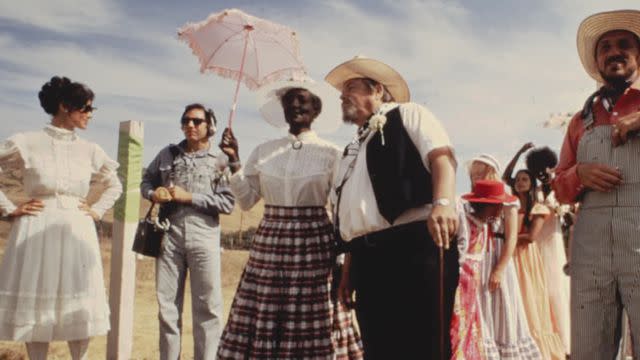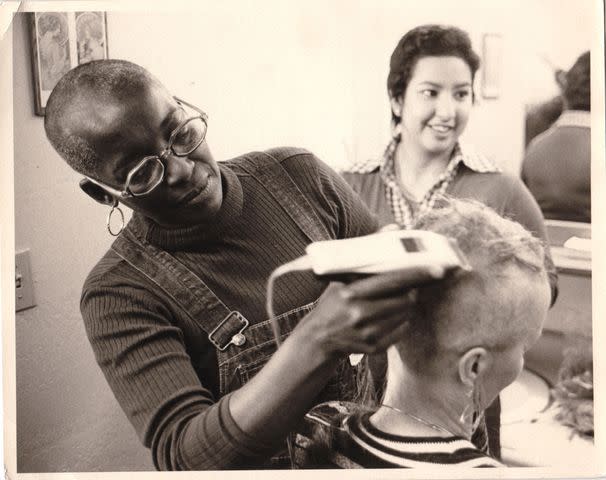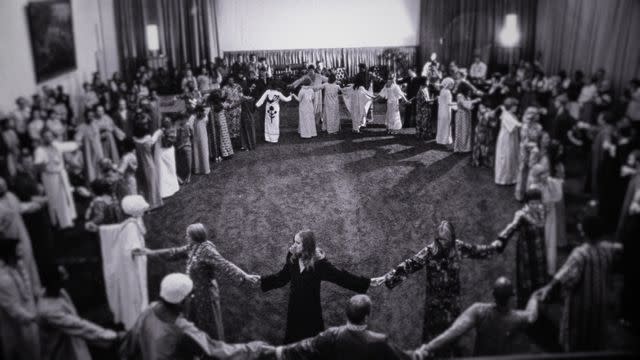What Was Synanon, the Violent Cult Featured in New Paramount+ Docuseries?
"Born in Synanon" explores the California cult that started as a drug rehabilitation program

Paramount+
'Born in Synanon'.A new Paramount+ docuseries is putting a spotlight on a Southern California drug rehabilitation organization that slowly turned into a dangerous and violent cult.
"Born In Synanon," the new series, began streaming this week and focuses on the social experiment-turned-religious movement founded by Charles E. “Chuck” Dederich in the late 1950s.
The group, first dubbed “Synanon” before later becoming known as the “Church of Synanon” decades later, was originally founded by Dederich as an alternative to Alcoholics Anonymous. Based in Santa Monica, Calif., the movement attracted thousands of followers over its decades of existence. The group disbanded in 1991, and Dederich died in 1997, but its impact has continued to follow many of its former members as more attention has been brought to its sometimes violent control tactics.

Bruce Levine/Courtesy of Paramount+
Synanon founder Chuck Dederich and his wife Betty at a Western wedding in Born in SynanonWhat is Synanon?
Dederich originally founded Synanon in 1958 as a way to provide assistance to people addicted to drugs, since Alcoholics Anonymous did not provide assistance to other forms of drug addiction at the time, according to a 2018 Los Angeles Magazine examination of the cult.
The magazine reported that Synanon was a first-of-its-kind rehabilitation program that helped change the American public’s belief that drug addiction could be treated. However, Dederich’s grasp on the group and its followers began to become manipulative and violent.
The leader claimed members of the program needed to live on the compound in order to receive the proper help they needed. Members shaved their heads and wore similar clothing, and many displayed unquestioning obedience to Dederich despite his increasing brutality and violence, according to reporting by Los Angeles Magazine.

Bruce Levine/Courtesy of Paramount+
Men marching in practice for the upcoming Renaissance wedding in Born in SynanonWho was its leader?
Dederich, born in Toledo, Ohio in 1913, was an alcoholic by the time he was in high school, according to a New York Times obituary about the divisive cult leader. His problems continued throughout his life: He dropped out of Notre Dame after just 18 months because of poor grades amid his struggle with addiction. When he was 43, Dederich sought help from Alcoholics Anonymous and soon began hosting others addicted to both alcohol and other drugs at his apartment in Ocean Park, Calif.
The charismatic Dederich founded Synanon at a small storefront in Southern California and quickly began attracting more members. ''I say this with as much humility as I am capable, which isn't very much, but when I sit down and start to talk, people start gathering,'' Dederich once said in a 1980 deposition, according to the Times. ''It is inevitable.”
Dederich’s organization ultimately amassed $30 million in assets after attracting donations from around the country as word spread about the movement and its proclaimed ability to help addicts in need.

Bruce Levine/Courtesy of Paramount+
Betty Dederich, wife of Synanon's founder Chuck, shaving Kathy Sheehan Lewbell's head in Born in SynanonWhat did Synanon’s followers believe in?
Dederich and his movement’s core belief, according to the Times, was that drug addicts required tough love to overcome their struggles. The leader had viewed drug addicts as child-like and thus treated them with harsh discipline that ultimately became violent. Dederich would tell followers: “'Today is the first day of the rest of your life,” according to the Times, and believed that drug addiction could be treated — a core component of his recruitment campaign that attracted many of its followers.
But according to Los Angeles Magazine, Dederich also eventually claimed that if a follower left the group, then they would revert back to their addictions, thus allegedly trapping many in the group’s grasp. That grasp, many former members and critics have said, was an abusive one.

Bruce Levine/Courtesy of Paramount+
A still from Born in SynanonWhat went wrong?
Part of Dederich’s methods for recovery included gatherings referred to as “the Synanon Game” in which members would be encouraged to scream aggressively, which often spilled over into actual physical violence, Cassidy Arkin, the former member and subject of Paramount+’s new series recently told CBS News.
“There were things that were not right,” Arkin said she realized after moving out of the compound. “I didn’t realize until I was much older how bad things had gotten.”
Among those things, the Times reported that Dederich was sentenced to five years' probation after pleading no contest to conspiracy to commit murder after he and other members placed a rattlesnake in the mailbox of lawyer Paul Morantz, who had filed a lawsuit against the group. Morantz was bit and spent several days in the hospital, ultimately surviving the attack. After that, Dederich was banned from leading Synanon.
What happened to Synanon?
Synanon officially disbanded in 1991 after the Internal Revenue Service cracked down on the group in the mid-1980s. A federal district judge had rejected the group’s claim to be a tax-exempt religion, according to The New York Times, ruling that the group engaged in fraud in an attempt to gain the tax benefit.
Born in Synanon is available to stream on Paramount+.
For more People news, make sure to sign up for our newsletter!
Read the original article on People.

